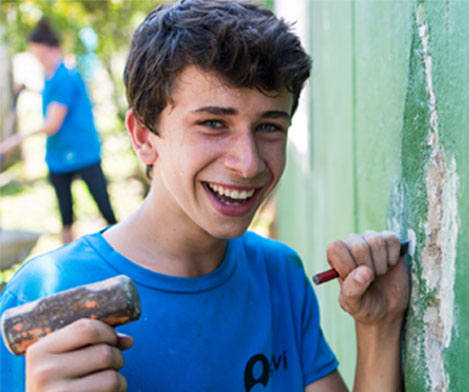-
General Details
ContextWith a population of around 4 million people, the Government of Lebanon (GoL) estimates that the country hosts 1.5 million Syrian refugees (1.017 million registered with UNHCR ) which has placed enormous burden on the delivery of basic public services, including education.Since the onset of the Syrian crisis, the GoL has responded to the increasing demand for education by opening up its public schools for refugees. At present, there are over 1.4 million vulnerable school-aged children and adolescents in Lebanon , of which 205,362 refugee youth are aged 15-24 years . Access to formal education has been on a steady rise since the start of the crisis mostly due to support mechanisms such as the subsidization of school fees and related costs, opening up of second shift schools for non-Lebanese children , waiving of documentation requirements to register at school and receive certification, and large-scale outreach operations, which have made a significant impact on access to public basic education .The Ministry of Education and Higher Education (MEHE), with the support of donors and education partners, developed the Reaching all Children with Education (RACE) crisis response plan. Articulated around the three pillars of access, quality and system strengthening, and anchored in SDG4, RACE II (2017-2021) aims to ensure access to quality learning opportunities for all children and youth ages 3-18, in safe and protective environments, through a variety of means, including non-formal education. With its increasing focus on system strengthening and education quality, RACE II reflects the strategic shift in the crisis response from humanitarian to development.Challenges and opportunitiesMEHE has worked to establish alternative pathways for education and to regulate the content and administration of NFE programmes . Furthermore, in order to ensure the retention of learners and their transition to upper grades, more attention is being put on retention and remedial support programmes that target under-performing learners and those at risk of dropping out.Despite these efforts, considerable challenges remain both in terms of increasing access to education and maintaining its quality. Persistent poverty, security, and legal barriers are the main reasons why refugee parents keep their children out of education systems, especially for young people aged 15 and above, who are required by law to have residency permits. Many school-aged children and youth also have to work to support their families. Moreover, untrained personnel, poor learning environments and language barriers continue to be challenges, in addition to violence and bullying at home, school, or en-route to school. The increased focus of RACE II on quality and educational system provides the opportunity to address these challenges. Also worth mentioning are MEHE’s new Child Protection Policy and the ongoing work for the development of the Inclusive Education Policy and the National Policy on the prevention of violence and extremism (PVE).In 2016-2017, only 3% of non-Lebanese secondary school aged youth enrolled in public schools, and only 6% of youth aged 18 and above enrolled in higher education . Scaling up the support to youth and increasing post-basic education opportunities remain a major gap and an under-funded response area. Lack of quality and timely data on youth also hinders systematic planning and programming for them . In addition, refugee youth continue to face challenges accessing TVET. As for higher education, which is still not part of RACE II, the level of support and financing has not kept pace with the growing demand. -
Country Profile
-
Country Target Status
Latest News
-
UNESCO and Kayany Foundation launch the UNESCO Middle Schools for Syrian Refugees
-
Important Announcements from High-Level REC
-
UNESCO Beirut and its partners launch this year’s Back to School campaign celebrating school heroes
-
UNESCO Beirut co-organizes Global Week for Syria
-
UNESCO Beirut participates in a Regional Meeting of Experts on Literacy in Arab states
-
UNESCO Beirut sensitizes Education practitioners about the role of education in promoting global citizenship and preventing violent extremism
-
UNESCO Beirut celebrates the Global Action Week for Education







